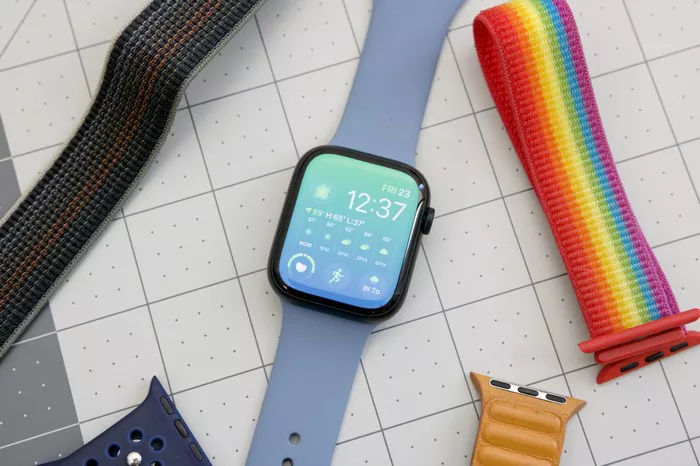The Apple Watch, a line of smartwatches developed by Apple Inc., has evolved significantly since its inception. As with any product lineup, it’s crucial to understand the chronological order of releases to appreciate the progression of features and capabilities. In this article, we delve into the question: Which Apple Watch came out first? We’ll explore the timeline of Apple Watch releases, detailing each model’s key features and improvements.
1. Apple Watch (1st Generation) – April 24, 2015
Codenamed “Gizmo” during development, the first-generation Apple Watch was unveiled by Apple CEO Tim Cook on September 9, 2014.
Released on April 24, 2015, this smartwatch marked Apple’s entry into the wearable technology market.
Available in three collections: Apple Watch Sport, Apple Watch, and Apple Watch Edition, featuring different materials such as aluminum, stainless steel, and 18-karat gold, respectively.
Running on watchOS 1.0, it introduced features like notifications, fitness tracking, and customizable watch faces.
Powered by the Apple S1 system-on-chip (SoC), with a Retina display protected by sapphire crystal.
2. Apple Watch Series 1 and Series 2 – September 16, 2016
Building upon the foundation of the original Apple Watch, Apple released the Series 1 and Series 2 models simultaneously.
Series 1 featured the same dual-core processor as the Series 2 but lacked GPS and waterproofing.
Series 2 introduced GPS functionality for accurate workout tracking and was water-resistant up to 50 meters.
Both models ran on watchOS 3.0, bringing significant performance improvements and new features like the Breathe app for mindfulness exercises.
Series 2 also included a brighter display and a second-generation OLED Retina display.
3. Apple Watch Series 3 – September 22, 2017
The Apple Watch Series 3 marked another leap forward with the introduction of cellular connectivity, allowing users to make calls, send messages, and stream music without relying on a paired iPhone.
Powered by the S3 SoC, which offered faster performance and improved power efficiency.
Retained the design of its predecessors but added a red dot on the Digital Crown to signify cellular capability.
Enhanced health and fitness tracking capabilities, including a barometric altimeter for tracking elevation changes.
Compatible with watchOS 4.0, which introduced a redesigned Workout app and enhanced heart rate monitoring features.
4. Apple Watch Series 4 – September 21, 2018
Representing a significant redesign, the Apple Watch Series 4 featured a larger display and a thinner chassis compared to previous models.
Introduced the Apple S4 chip, which delivered faster performance and enabled new features like fall detection and electrocardiogram (ECG) functionality.
Enhanced health monitoring capabilities, including irregular heart rhythm notifications and the ability to detect low heart rates.
Advanced fitness tracking features, including automatic workout detection and a redesigned Activity app.
Ran on watchOS 5.0, which introduced features like Walkie-Talkie and enhanced Siri capabilities.
5. Apple Watch Series 5 – September 20, 2019
Building upon the foundation laid by the Series 4, the Apple Watch Series 5 introduced an Always-On Retina display, allowing users to glance at the time and complications without raising their wrists.
Powered by the Apple S5 chip, offering improved performance and energy efficiency.
Continued focus on health and fitness, with features like menstrual cycle tracking and noise level monitoring.
Retained the same design as the Series 4 but offered new materials and finishes, including titanium and ceramic.
Ran on watchOS 6.0, which introduced features like the Cycle Tracking app and the App Store directly on the device.
6. Apple Watch Series 6 – September 18, 2020
The Apple Watch Series 6 introduced several notable features, including blood oxygen saturation (SpO2) monitoring and an improved always-on display that’s 2.5 times brighter outdoors.
Powered by the Apple S6 chip, which delivered faster performance and improved energy efficiency compared to its predecessor.
Expanded health and fitness capabilities, including sleep tracking and new workout types like dance and functional strength training.
Available in new finishes like Product(RED) aluminum and new bands like the Solo Loop and Braided Solo Loop.
Ran on watchOS 7.0, which introduced features like Family Setup and handwashing detection.
7. Apple Watch SE – September 18, 2020
Launched alongside the Series 6, the Apple Watch SE offered a more affordable entry point into the Apple Watch ecosystem.
Utilized the same design as the Series 6 but lacked certain advanced features like ECG and blood oxygen monitoring.
Powered by the Apple S5 chip, which provided ample performance for everyday tasks and fitness tracking.
Ran on watchOS 7.0, offering many of the same features as the Series 6, including Family Setup and sleep tracking.
Positioned as a mid-tier option between the entry-level Series 3 and the flagship Series 6.
Conclusion
In conclusion, the Apple Watch has undergone a remarkable evolution since its inception in 2015. From its humble beginnings with the first-generation model to the latest iterations like the Series 6 and SE, each release has brought significant advancements in technology, design, and features. The chronological progression outlined in this article highlights Apple’s commitment to innovation and its dedication to improving the user experience with each new iteration of the Apple Watch. Whether it’s enhanced health monitoring capabilities, improved performance, or new features like cellular connectivity and blood oxygen monitoring, the Apple Watch continues to redefine what a smartwatch can do. As we look ahead to future releases, it’s clear that the Apple Watch will remain a cornerstone of Apple’s product lineup, shaping the future of wearable technology for years to come.

